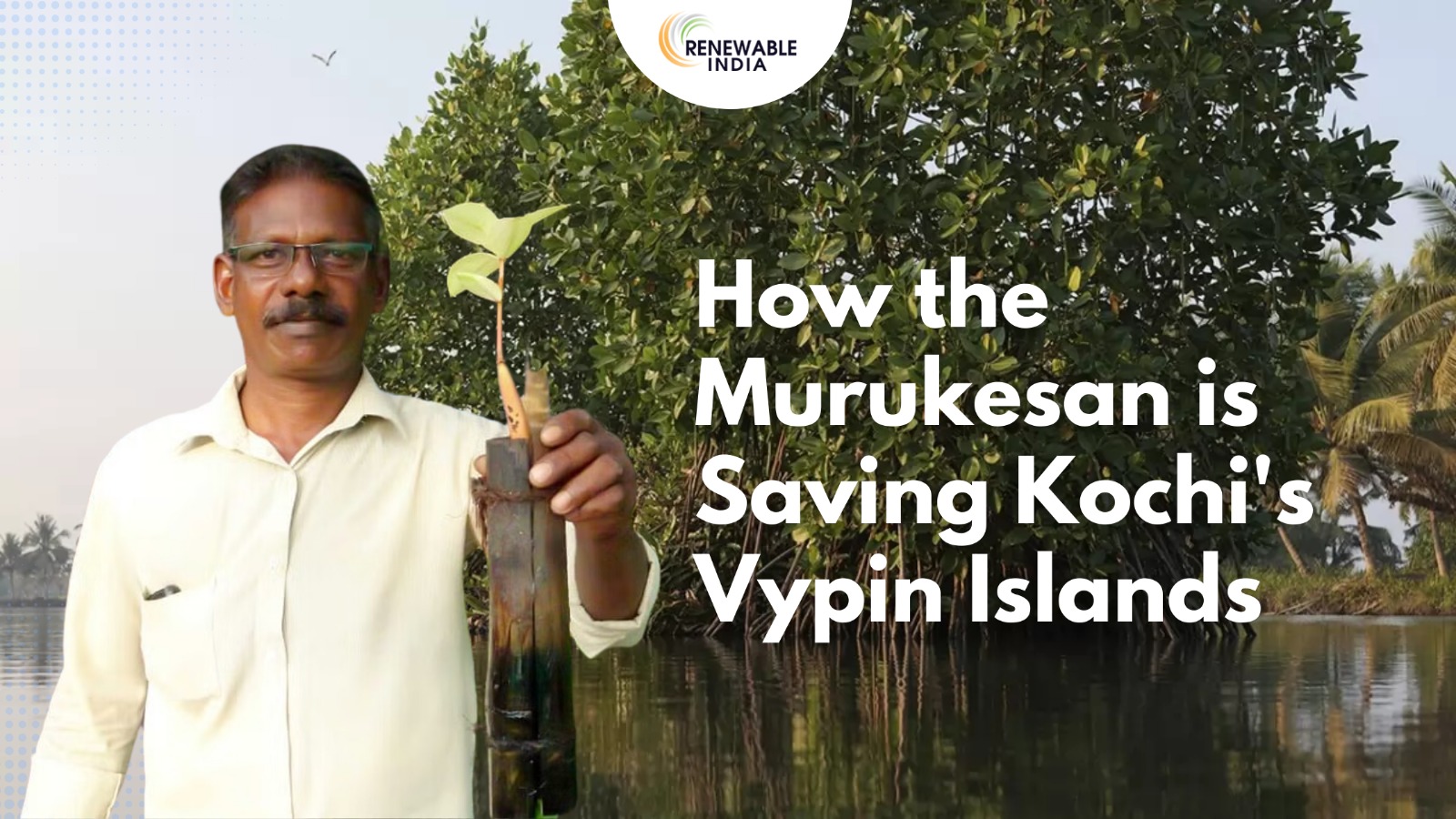
In the face of rising sea levels and relentless tidal floods, one man’s remarkable journey to protect his community and the environment began. Meet the Indian mangrove man, Murukesan T.P. He personally planted approximately 100,000 mangroves in the Kochi Vypin Islands off the west coast of India because he had a profound awareness of the crucial role that mangrove plants play in the environment.
The once-fragile intertidal zone was converted into a vibrant green forest by his relentless efforts. As we explore Murukesan’s epiphany, the advantages of mangroves, and the ecological relevance of his incredible endeavour, we invite you to delve deeper into the incredible journey of Mr, Murukesan T.P.
Murukesan’s journey began when numerous residents on Kochi’s Vypin Islands were forced to evacuate to higher ground due to rising sea levels and tide floods. Murukesan was acutely aware of the terrible effects of these environmental changes and recognised the pressing need for a long-term remedy.
He set out on a mission to restore the island’s natural equilibrium by concentrating on mangrove trees out of a strong sense of responsibility. Murukesan understood that mangroves held the secret to reducing the effects of tidal surges and safeguarding shorelines because of their extraordinary capacity to flourish in salty water inside the intertidal zone.
Murukesan painstakingly built a home nursery and creatively used bamboo scraps to store and care for the mangrove saplings. His commitment and arduous work produced a consistent supply of sound seedlings that were prepared to be planted all across the island.
Murukesan persevered against all circumstances while planting mangrove saplings with a sense of purpose and his bamboo nursery. His selfless dedication paid off over time as the once desolate terrain gradually changed into a lush green forest alive with life.
Mangroves are more than simply common trees; they are ecological powerhouses that help the environment and the communities they live in in immeasurable ways. They act as a natural barrier against tidal waves by slowing them down and shielding susceptible shorelines from erosion and storm surges with their characteristic prop roots that protrude above the water’s surface.
Additionally, these extraordinary trees serve as significant carbon sinks, effectively absorbing and storing significant volumes of atmospheric carbon dioxide. Mangroves contribute significantly to preventing climate change and lowering greenhouse gas emissions in this way.
A wide variety of species can thrive in the dense network of mangrove roots. Numerous bird species, especially migratory and coastal birds, have safe havens in these coastal woodlands where they can rest, nest, and reproduce. The complex root systems assist the delicate balance of coastal habitats by acting as nurseries for several marine organisms.
Mangroves serve as organic water filters that clean coastal waters by capturing excess nutrients, pollutants, and sediment that might otherwise make their way into the ocean. The maintenance of water quality by this filtration process benefits marine life and the nearby communities who depend on these resources for their livelihoods.
Mangrove forests also help to preserve biodiversity by serving as a haven for a wide variety of rare plant and animal species. These ecosystems support sustainable development and enhance lives by giving local communities access to vital resources including lumber, fuelwood, and medicinal plants.
Murukesan T.P., the Indian mangrove man, is a symbol of the strength of one person’s commitment to bring about a positive change. He turned Kochi’s Vypin Islands into a thriving green forest, all credit goes to his persistent work and in-depth comprehension of the ecological importance of mangrove plants.
In addition to safeguarding the island from tidal floods, the restoration of the mangrove ecosystem also offers a home for migratory and coastal birds, prevents erosion, slows the effects of climate change by trapping carbon, and sustains a variety of marine life. Murukesan’s motivational journey serves as a reminder that we have the capacity to protect and preserve nature, paving the road for a sustainable future.
Attaware Edible Cutlery – Savor Sustainability, Bite by Bite
Leave a Reply